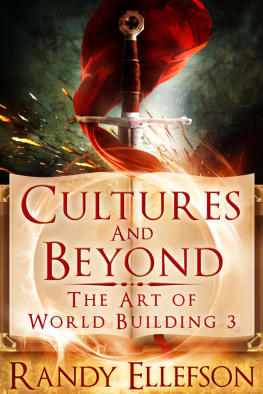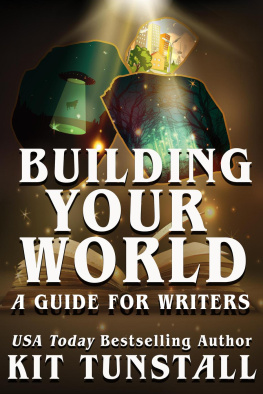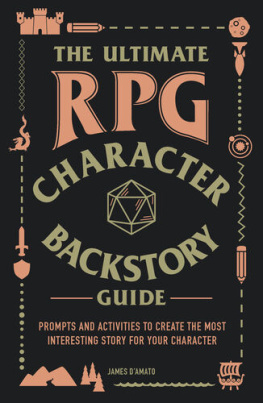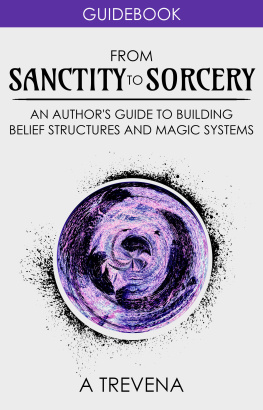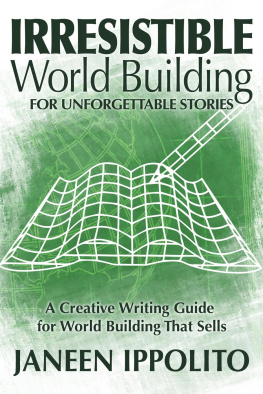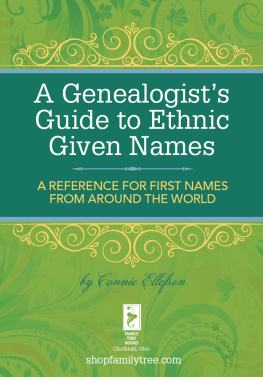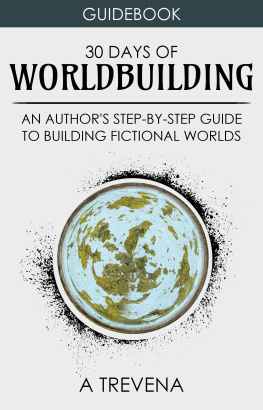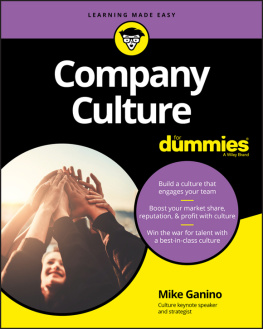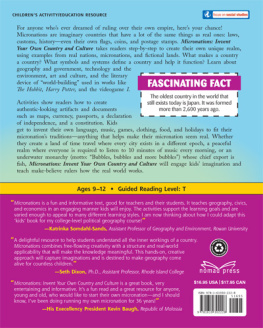CULTURES AND BEYOND
The Art of World Building
Volume 3
by Randy Ellefson
Copyright 2020 Randy Ellefson / Evermore Press
All rights reserved. No part of this publication may be reproduced or transmitted in any form or by any means; electronic or mechanical, including photography, recording, or any information storage and retrieval system, without permission in writing from the author.
This book includes fictional passages. All names, characters, locations, and incidents are products of the authors imagination, or have been used fictitiously. Any semblance to actual persons living or dead, locales, or events is entirely coincidental and not intended by the author.
Publishers Cataloging-In-Publication Data
(Prepared by The Donohue Group, Inc.)
Names: Ellefson, Randy, author.
Title: Cultures and beyond / Randy Ellefson.
Description: [Gaithersburg, Maryland] : Evermore Press, [2020] | Series: The art of world building ; volume 3
Identifiers: ISBN 9781946995056 (Amazon paperback) |
ISBN 9781946995346 (IngramSpark paperback) |
ISBN 9781946995117 (IngramSpark hardcover))
Subjects: LCSH: Fantasy fiction--Authorship. | Imaginary
societies. | Imaginary places. | Creative writing. |
Storytelling.
Classification: LCC PN3377.5.F34 E453 2020 |
DDC 808.38766--dc23
Endorsements
Bestselling Author Piers Anthony
I have been writing and selling novels for more that half a century, and I have been learning things here. I recommend all three for background reading for those who are serious about the worlds they create. The present volume is amazingly informative.
Ed Greenwood, Inventor of The Forgotten Realms and dozens of imaginary worlds
Ellefson continues his masterful overview of worldbuilding, carefully and coherently dealing with every last detail...that...Creating Life and Creating Places haven't covered. All three are essential reference works...Ellefson is a master of this craft, and it shows. Highly recommended!
Table of Contents
Introduction
With creating life and places covered in volumes one and two, we turn our attention to everything else about setting that characterizes our world, inhabitants, and storylines.
In this volume, well discuss:
Cultural vision, scope, origins, and manifestations
Organizations like organized crime or secret sects
Armed forces (the army, navy, and air force)
Religions and how to leverage deities weve invented
The supernatural and its impact
Items, whether supernatural, technological, or neither
Languages and the impact they have on setting
Names and techniques to invent them
Educational, legal, commerce, health, and IT systems
Approaches to managing our world building development
Examples included in the text were created specifically for this guide and are not drawn from any setting Ive created, or stories Ive written or published.
Chapter 1 from Creating Life (The Art of World Building, #1) includes discussion of some principles referred to here, the main one being the use of analogues. This means inventing something that is based on an Earth equivalent but making enough changes to it that people are less likely to recognize the influence. This is known as the Rule of Three.
The book has a website where you can find additional resources and information on other volumes in this series:
http://www.artofworldbuilding.com
Where to Start
The series and chapters within each volume can be read in any order but are arranged according to what might come first in a worlds timeline. This volume is an exception; one chapter has little to do with the next. If you have an idea for something covered herein, write down everything youre thinking of before reading about other things you might consider. This will keep you from forgetting your idea or becoming overwhelmed with feelings of needing to get it right; theres really no such thing. Then you can read on for new ideas to enrich your setting.
So where do you start? Where your heart lies.
About Me
By profession Im a software developer, but Ive been writing fantasy fiction since 1988 and building worlds just as long, mostly one planet called Llurien. Yes, I am crazy. But I love what I do. I didnt intend to work on it for so long, but when life has prevented me from writing, Ive worked on Llurien. Ive done everything in these chapters and authored two hundred thousand words of world building in my files. Llurien even has its own website now at http://www.llurien.com. Ive written six novels and over a dozen short stories over the years, and have just begun my publishing career with a novella that you can read for free (see below).
Im also a musician with a degree in classical guitar; Ive released three albums of instrumental rock, one classical guitar CD, and a disc of acoustic guitar instrumentals. You can learn more, hear songs, and see videos at my main website:
http://www.randyellefson.com.
Free Book
If youd like to see a free sample of my own world building efforts in action, anyone who joins my fiction newsletter mailing list receives a free eBook of The Ever Fiend(Talon Stormbringer). Please note theres also a separate newsletter for The Art of World Building, though both can be joined on the same signup form. Just check the box for each at http://www.randyellefson.com/newsletter.
Figure 1: Free Book
Disclaimers
While some authors prefer the term races to species, Ive used the latter term throughout most of the series except for the section in the first volume discussing the merits of both terms. This book uses SF to abbreviate science fiction. SF is broadly defined herein as a setting with technology far in excess of current capabilities. Fantasy is loosely defined in this book as a setting using magic, knights, and lacking modern technology. As a stylistic point, to avoid writing he/she, Ive also opted for he when discussing someone who could be either gender.
The Chapters
What follows is a brief summary of whats included in each chapter in Volume Three, Cultures and Beyond.
Chapter 1 Cultures
This chapter discusses the differences between a culture and a custom, and that morals, values, and beliefs underlie everything. World builders can determine the scope of an invented culture, as some are regional or extend throughout a sovereign power. Cultural depictions can have visible, audible, and behavior aspects that can be defined. These include issues such as body language, hair styles, gestures, clothing, and more. Greetings and farewells should be defined because characters will use them. Similarly, swear words, slang, verbal expressions, and colloquialisms can be created to characterize interactions. The daily life of a culture is depicted in dining, bathing, sleeping, employment, and transportation rituals and behaviors; pastimes, holidays and more create a respite for the everyday activities. Even architecture can be influenced by culture.
Chapter 2 Organizations
Organizations for good or evil are a staple of both fantasy and SF. This chapter discusses both group types and their world views, plus common traits like goals, enemies, friends, and their source of (and quest for) power. How members join and leave such groups is an important element; some organizations might prevent or inhibit departure. Prerequisites can also bind a member to the group. The history and actions of a group are an important part of its reputation.

